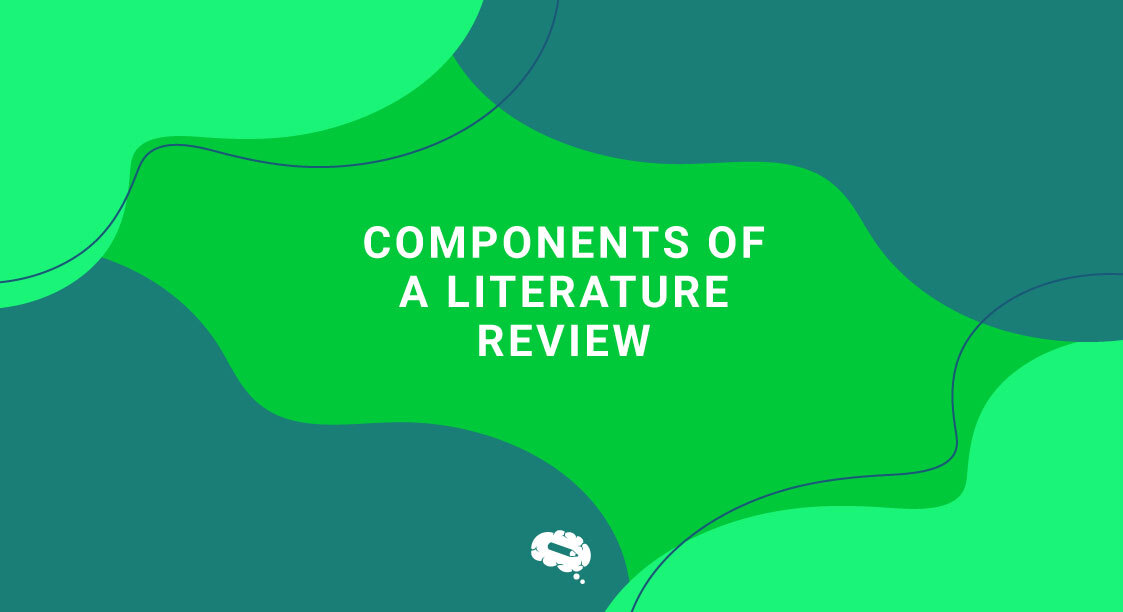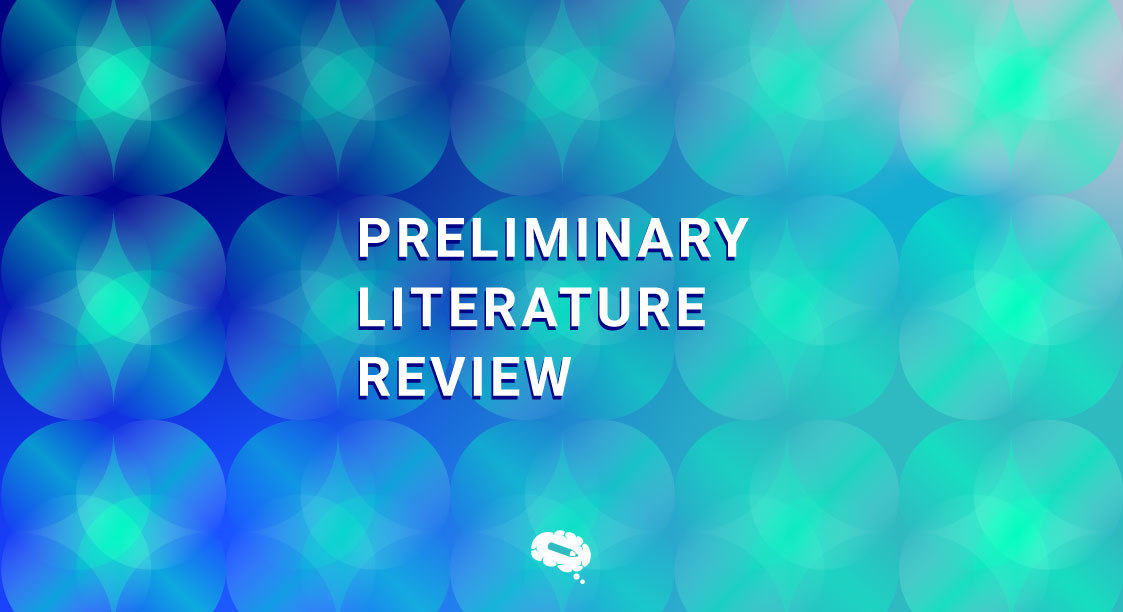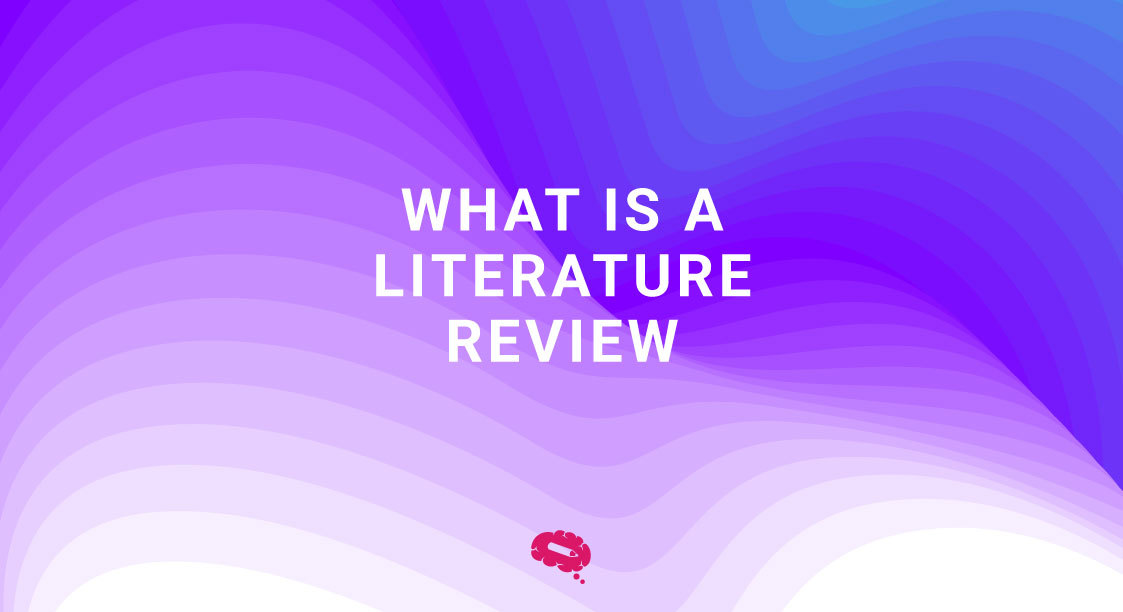The literature review is the cornerstone of academic research due to the fact that it offers a thorough overview and critical analysis of the content of previously published scholarly works on a certain subject. As scholars set out on their intellectual journeys, it becomes increasingly important to comprehend the key components that are involved in creating an effective and compelling literature review.
The essential components of a literature review will be explored in depth in this article. Researchers can improve the quality and credibility of their work, significantly add value to current knowledge, and build a strong base for future research by having a thorough understanding of these components.
What is a Literature Review?
A literature review is a critical and thorough examination of all previously published academic works that are pertinent to a certain research topic or question, including books, journals, dissertations, and conference papers. It serves as a knowledge synthesis, giving an overview and assessment of the existing literature in a certain field or subject area.
The main goal of a literature review is to identify, examine, and summarize the most important conclusions, concepts, theories, methods, and controversies that have been made in existing literature. It tries to determine the existing level of knowledge, identify any gaps or inconsistencies, and point out areas that require additional research.
A thorough search for relevant sources, a critical assessment of their value, and creating an organized and coherent synthesis of the data are all components of a well-conducted literature review. It helps researchers situate their own work within the broader academic context, identify research questions or gaps to address, and build on existing knowledge.
Researchers may additionally demonstrate their expertise with the subject, showing their comprehension of the pertinent theories and concepts, and provide the groundwork for the theoretical framework of their own research through the literature review. It can be used to critically engage with already published works, assess other perspectives, and add to the intellectual debate within a given topic.
Purpose of a Literature Review
The purpose of a literature review is to provide an in-depth overview and analysis of existing knowledge, research, and scholarly literature on a specific topic. It fulfills a number of essential purposes in academic and research contexts, including:
- Sets the context by summarizing current knowledge and identifying gaps.
- Identifies areas needing further investigation.
- Evaluates the quality of existing research.
- Prevents duplication and plagiarism by ensuring novelty.
- Supports theoretical frameworks and hypotheses.
- Synthesizes and summarizes many sources of existing knowledge.
- Informs research methodology decisions.
- Guides the direction of the research study.
Examples of Literature Reviews
Here are some examples of literature reviews:
Posttransplantation Diabetes: A Systematic Literature Review
The goal of this systematic literature review is to offer a thorough examination of the body of literature on posttransplantation diabetes (PTD) at this time. The review’s main objectives are to examine the best management practices and comprehensively assess the incidence of PTD, as well as its risk factors and prognostic implications. This review seeks to advance knowledge of PTD and improve patient treatment in transplant settings by integrating and evaluating pertinent studies.
Child Well-being: A Systematic Review of the Literature
This systematic literature review provides a comprehensive assessment of the current state of child well-being research by examining the existing literature in English. The review addresses key research questions, including the definition of child well-being, the domains that contribute to child well-being, the indicators used to measure child well-being, and the methodologies employed for measuring child well-being. The findings of this review contribute to a deeper understanding of child well-being and can inform policies and interventions aimed at promoting positive outcomes for children.
Psychological Safety: A Systematic Review of the Literature
This systematic literature review aims to provide a comprehensive analysis of the empirical research on psychological safety, including its antecedents, outcomes, and moderators at various levels of analysis. With a growing body of empirical evidence in this field, a systematic review is necessary to synthesize the existing literature. In addition to reviewing empirical studies, this study identifies gaps and it emphasizes the importance of integrating key theoretical perspectives to enhance our understanding of how psychological safety develops and influences work outcomes across different levels of analysis. Furthermore, the review provides suggestions for future empirical studies to advance our knowledge of psychological safety.
Types of Literature Reviews
There are different types of literature reviews that researchers can employ based on their research objectives and the nature of the topic. Here is a brief description of each type:
Chronological
Organizes research in chronological order to illustrate the historical development of ideas and theories over time.
Thematic
Focuses on common themes or topics across studies to provide a comprehensive analysis of the subject matter.
Methodological
Evaluates research methodologies used in previous studies, highlighting strengths, weaknesses, and analytical techniques.
Theoretical
Analyzes and synthesizes theoretical frameworks and models utilized in research to establish their relevance and applicability.
Integrative
Goes beyond summarizing studies by identifying patterns, relationships, and connections between different studies to provide a cohesive understanding of the topic.
Systematic
Employs a rigorous and predefined methodology to select, evaluate, and synthesize relevant research studies. It involves predefined search criteria, inclusion/exclusion criteria, and systematic data extraction to minimize bias and ensure a thorough analysis of the literature.
Scoping
Maps the existing literature on a broad research topic, identifying key concepts and areas for further investigation. Scoping reviews are particularly useful when the research area is complex or lacks a clear focus.
Meta-Analysis
Quantitatively synthesizes data from multiple studies using statistical analysis to generate pooled effect sizes and draw robust conclusions.
5 Steps to Writing a Literature Review
A literature review should not be a mere summary of sources. It should demonstrate critical thinking, analysis, and the ability to synthesize information from various sources to support your research objective. Here are the steps to writing a literature review:
1. Define your goal
Clarify the purpose of your literature review. Determine if you are aiming to provide an overview, identify research gaps, support a hypothesis, or offer a critical analysis.
2. Do your research
Conduct a comprehensive search of relevant scholarly literature using databases, academic journals, books, and other reputable sources. Select articles, studies, and sources that are directly related to your research topic.
3. Ground summary in relevance
Summarize and synthesize the key findings, arguments, and methodologies of the selected sources. Ensure that your summary directly relates to your research goal and provides meaningful insights.
4. Develop review logically
Organize the literature review in a logical manner. You can choose to structure it chronologically, thematically, or based on other relevant categories. Clearly present the main points and subtopics, and establish connections and relationships between the sources.
5. Include references/works cited list
Properly cite all the sources you have used in your literature review. Follow the appropriate citation style (such as APA, MLA, or Harvard) and provide complete and accurate information for each source in your references or works cited list.
Difference Between a Literature Review and An Annotated Bibliography
A literature review and an annotated bibliography are two distinct academic writing assignments that serve different purposes.
A literature review aims to provide a comprehensive and critical analysis of the existing literature on a specific research topic. It involves summarizing, evaluating, and synthesizing the key findings, theories, and methodologies of relevant scholarly sources.
Annotated bibliographies, on the other hand, concentrate on giving a concise overview and evaluation (annotation) of each cited source. It tries to educate the reader about the sources’ quality, relevancy, and content.
For more information on annotated bibliographies, you can visit the article here which provides a detailed explanation of what an annotated bibliography is and how to create one.
While a literature review covers a broader range of literature and requires a deeper analysis, an annotated bibliography focuses on a narrower selection of sources and provides concise annotations for each entry.
Conclusion
By following the essential components of a literature review discussed in this article, researchers can ensure a high-quality review. Thorough planning, systematic searching, critical evaluation, organization, synthesis, analysis, and effective communication are key. Mastering these components enables researchers to contribute valuable insights and advance knowledge in their field. A well-executed literature review serves as the foundation for robust research and facilitates new discoveries.
Communicate Science VIsually with The Power of The Best and Free Infographic Maker
The Mind the Graph platform offers scientists a powerful and free infographic maker to communicate science visually. With this platform, scientists can effectively convey complex research findings, concepts, and data through engaging and eye-catching infographics. Mind the Graph empowers scientists to harness the power of visual storytelling, making their research accessible, memorable, and impactful to a broader audience.

Subscribe to our newsletter
Exclusive high quality content about effective visual
communication in science.





